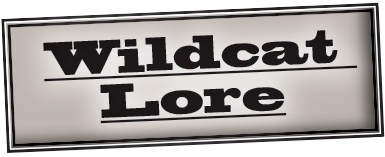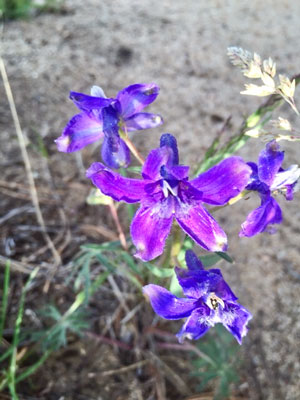Larkspur: What’s in a name?


Article and photo by Joe Gschwendtner; photo courtesy of the Colorado Historical Society

1920 Larkspur photo looking east at the Frink Creamery (later destroyed in 1965 flood), courtesy of Susan Consola Appleby’s “Fading Past.”
As we left 1871 Huntsville in the throes of death in our Wildcat Lore last month, commerce shifted rapidly south to Larkspur. This was due in no small measure to relocation of the post office and arrival of the Denver & Rio Grande Railroad with track, freight depot and water tank.
Like the two Plateau stops on the southern borders of today’s The Village at Castle Pines, trains would pick up lumber, gypsum, clay and potash in Larkspur. In 1876, Larkspur’s Sloan Mill would ship about 7 million board feet of lumber, 100,000 ties, 2,000 telegraph poles, 15,000 cords of wood and 15,000 shingles. The clay found its way to Denver’s potters for ceramics and was also used in making sewer pipes.
With this kind of traffic, merchants saw opportunity and there were two competing dry goods stores: J.S McConnell’s and W. B. Evans. Local advertisements offered deep stock, low prices and that both would take farm and ranch products in trade for merchandise. Evans’ shop offered more and he would sponsor entertainment and social gatherings. Once, with music played by the Moorhead Brothers, Deacon Thompson taught all the partygoers the “double shuffle.” Close by was the Victoria Casino, frequently offering dancing and even masquerade balls.
In 1883, Evans chose to sell his business, and in 1884 he became Larkspur’s school superintendent. Later advertisements suggest F.B. Ross bought his store. Clearly the competition remained intense for the day.

Larkspur flower on Spruce Mountain.
Larkspur’s hills and buttes were ideal terrain for ranching and farming. Dairying in particular, thrived. Two early entrepreneurs, C. G Carlson and C.B. Frink, found Larkspur an ideal site for processing and shipping milk products and would later merge. Frink went on to become a dairy titan, especially famous for his Black Canyon Cheese. A devastating 1965 flood laid waste to the main production facility in Larkspur finally ending Frink’s milk run.
Larkspur was also an early Colorado tourist attraction with a reputation as a health resort. Many were the city dwellers wishing to escape the heat and enjoy the brisk mountain air laced with the evocative, earthy smell of pine. Coupled with the popularity of Perry Park’s red rock formations and glorious fields of seasonal wildflowers, the area made for spectacular weekend outings.
Some of the county’s great ranches were founded in the Larkspur area. Former Governor Alexander Hunt’s ranch stood atop Hunt Mountain and is still in use today. It was Hunt’s wife Elizabeth who gave Larkspur her name, after the purple flowers that grew wild there. The Greenland Ranch just south, was cobbled together from lesser homesteads and by 1880 was renamed the Greenland Breeding Farm. Through a series of beneficial transfers, the farm eventually became protected with conservation easements, assuring permanent preservation in near turn of the century form.
Larkspur was aptly named. In May and subsequent summer months, the slopes of Spruce, Eagle and Monkey Face mountains and Raspberry Butte are carpeted with some of the world’s finest purple wildflowers… Do not take my word for it; put a Spruce Mountain hike on next year’s calendar now!